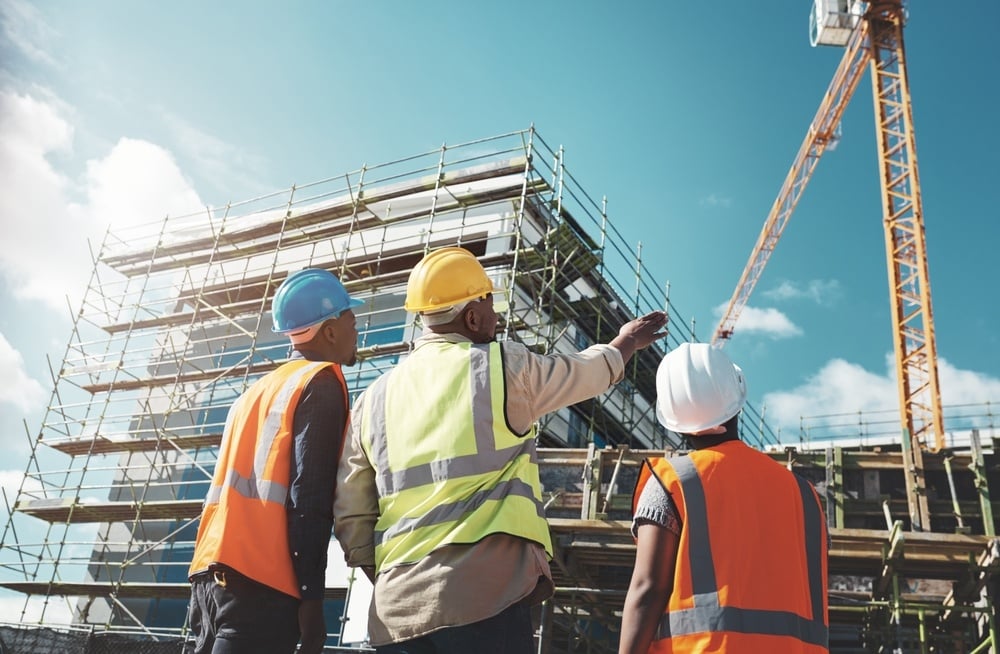
Mastering Risk Management in Commercial Construction

The construction industry is fraught with risks, from financial uncertainties to potential safety hazards. For commercial builders, effective risk management is crucial not only for completing projects on time and within budget but also for ensuring the safety of workers and the longevity of the structures they create.
In this blog post, we'll explore the importance of risk management in construction, particularly for commercial builders. We'll break down the types of risks you may encounter, the benefits of having a risk management strategy, and best practices for implementing effective risk management processes. By the end, you'll have a clear understanding of how proactive risk management can safeguard your projects and your business.
Why Risk Management is Crucial in the Construction Industry
Risk management in the construction industry is not merely a regulatory obligation; it is a fundamental practice that safeguards lives and livelihoods. This sector is among the most dangerous and risky in the world, with one in every five worker fatalities in the United States occurring in construction. In 2020 alone, 1,008 construction workers tragically lost their lives on the job. Moreover, annually, about 1% of construction workers miss work due to serious injuries. These incidents have profound implications, not just for the individuals and families directly affected, but also for the broader economic fabric. Fatal construction injuries are estimated to cost the United States more than $5 billion each year in healthcare, lost income, and lost production, while workers' compensation claims for nonfatal falls alone account for over $3.2 billion.
Effective risk assessment and management are therefore critical in mitigating these risks. By identifying potential hazards and implementing safety measures, we can create a safer working environment, enhance project efficiency, and foster a culture of care and responsibility that resonates throughout the community.
Understanding the Types of Risks in the Construction Industry
The construction industry is one of the most complex sectors, involving numerous stakeholders, materials, and processes. With this complexity comes a variety of risks that can impact project outcomes.
Financial Risks
Unpredictable financial elements such as fluctuating material costs, labor shortages, and economic downturns can severely impact project budgets. For instance, sudden increases in the price of raw materials can drive up overall costs, while labor shortages can lead to higher wages and delays. Additionally, economic downturns can dampen investor confidence and reduce available funding. Financial instability brought about by these factors can lead to project delays, scaling back of project scope, or even cancellations, making it crucial to plan and manage finances carefully.
Operational Risks
These risks involve day-to-day operations and can include equipment failures, supply chain disruptions, and project management challenges. Equipment failures might halt production lines, causing delays and reducing output. Supply chain disruptions can lead to shortages of critical materials, impacting overall productivity. Project management challenges, such as missed deadlines or budget overruns, can further complicate operations. Poor management of operational risks can lead to significant inefficiencies, increased costs, and potentially damage a company's reputation. Effective risk management strategies are essential to mitigate these issues and ensure smooth operations.
Safety Risks
Construction sites are inherently dangerous, with numerous hazards that can lead to accidents and injuries. These hazards include heavy machinery, falling debris, and hazardous materials, all of which pose significant risks. Safety risks not only endanger workers, leading to potential physical harm and even fatalities but can also result in costly legal liabilities and reputational damage for the companies involved. Ensuring proper safety protocols and training is crucial in mitigating these dangers and creating a safer working environment.
The Importance of Risk Management for Commercial Builders
For commercial builders, managing risks is not just a regulatory requirement but a strategic necessity. Effective risk management can provide several critical benefits, including the prevention of costly project delays, safeguarding financial investments, and ensuring the safety and well-being of workers. By anticipating potential issues and implementing proactive measures, commercial builders can enhance project efficiency, maintain regulatory compliance, and foster a reputation for reliability and excellence in the construction industry.
Enhanced Project Efficiency
By identifying and mitigating potential risks early, commercial builders can ensure smoother project execution, minimizing delays and cost overruns.
Improved Safety Standards
A robust risk management plan prioritizes safety, helping to reduce workplace accidents and ensuring compliance with safety regulations.
Financial Stability
Proactive risk management helps commercial builders maintain financial stability by anticipating and preparing for potential financial pitfalls.
Best Practices in Implementing Effective Risk Management
Implementing effective risk management in construction requires a systematic approach. Here are some best practices that commercial builders can adopt:
Conduct Comprehensive Risk Assessments
Before starting any project, it is crucial to conduct a thorough risk assessment to identify all potential risks. This should include financial, operational, compliance, and safety risks unique to the construction world. At 4sight, we emphasize a comprehensive risk assessment strategy that goes beyond the basics. By considering a wide array of factors, we are able to foresee potential challenges and develop robust mitigation plans.
Develop a Risk Management Plan
Create a detailed risk management plan that outlines strategies for mitigating identified risks. This plan should be a living document, regularly updated as new risks emerge.
Engage Stakeholders
Involve all relevant stakeholders in the risk management process. This includes project managers, subcontractors, and suppliers. Their input can provide valuable insights into potential risks and mitigation strategies.
Assess, Prevent, Plan, Prepare
Proactive risk management is essential for commercial builders to succeed in the competitive construction industry. By understanding the types of risks, developing a comprehensive risk management plan, and fostering a culture of safety, commercial builders can ensure project success while protecting their workers and their business.
To further explore how risk management can benefit your construction projects, consider consulting with our expert team. We offer tailored solutions to help you mitigate risks and achieve your project goals. Contact us today to learn more about our services and how we can assist you in managing risks effectively.

